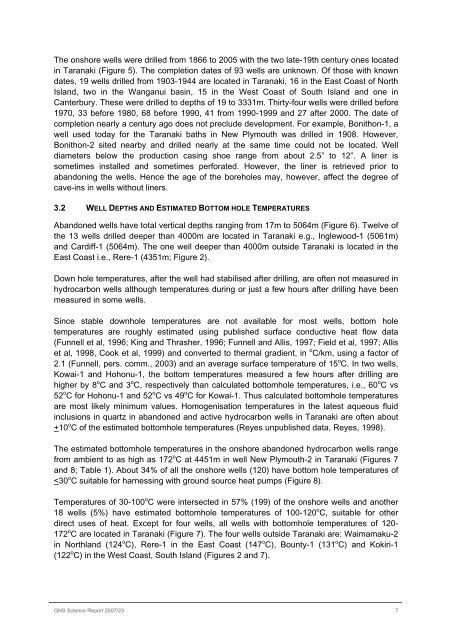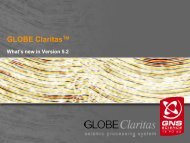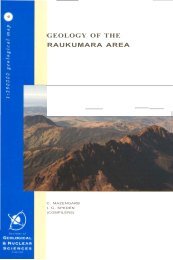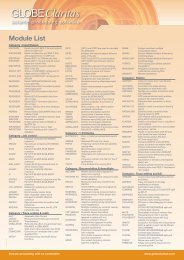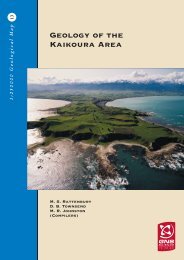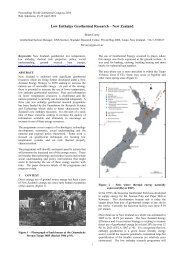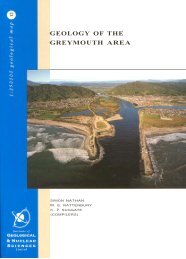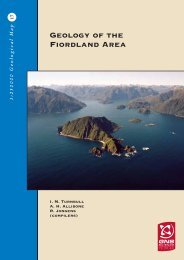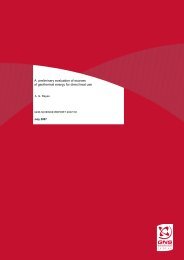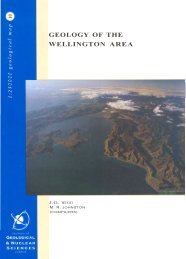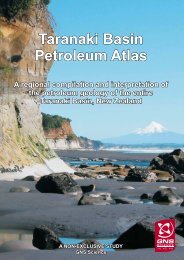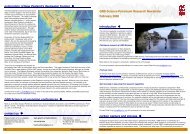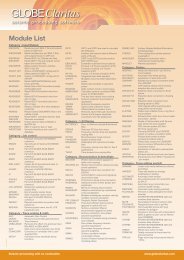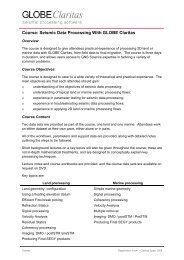GNS Science Consultancy Report 2006/0XX
GNS Science Consultancy Report 2006/0XX
GNS Science Consultancy Report 2006/0XX
Create successful ePaper yourself
Turn your PDF publications into a flip-book with our unique Google optimized e-Paper software.
The onshore wells were drilled from 1866 to 2005 with the two late-19th century ones located<br />
in Taranaki (Figure 5). The completion dates of 93 wells are unknown. Of those with known<br />
dates, 19 wells drilled from 1903-1944 are located in Taranaki, 16 in the East Coast of North<br />
Island, two in the Wanganui basin, 15 in the West Coast of South Island and one in<br />
Canterbury. These were drilled to depths of 19 to 3331m. Thirty-four wells were drilled before<br />
1970, 33 before 1980, 68 before 1990, 41 from 1990-1999 and 27 after 2000. The date of<br />
completion nearly a century ago does not preclude development. For example, Bonithon-1, a<br />
well used today for the Taranaki baths in New Plymouth was drilled in 1908. However,<br />
Bonithon-2 sited nearby and drilled nearly at the same time could not be located. Well<br />
diameters below the production casing shoe range from about 2.5” to 12”. A liner is<br />
sometimes installed and sometimes perforated. However, the liner is retrieved prior to<br />
abandoning the wells. Hence the age of the boreholes may, however, affect the degree of<br />
cave-ins in wells without liners.<br />
3.2 WELL DEPTHS AND ESTIMATED BOTTOM HOLE TEMPERATURES<br />
Abandoned wells have total vertical depths ranging from 17m to 5064m (Figure 6). Twelve of<br />
the 13 wells drilled deeper than 4000m are located in Taranaki e.g., Inglewood-1 (5061m)<br />
and Cardiff-1 (5064m). The one well deeper than 4000m outside Taranaki is located in the<br />
East Coast i.e., Rere-1 (4351m; Figure 2).<br />
Down hole temperatures, after the well had stabilised after drilling, are often not measured in<br />
hydrocarbon wells although temperatures during or just a few hours after drilling have been<br />
measured in some wells.<br />
Since stable downhole temperatures are not available for most wells, bottom hole<br />
temperatures are roughly estimated using published surface conductive heat flow data<br />
(Funnell et al, 1996; King and Thrasher, 1996; Funnell and Allis, 1997; Field et al, 1997; Allis<br />
et al, 1998, Cook et al, 1999) and converted to thermal gradient, in o C/km, using a factor of<br />
2.1 (Funnell, pers. comm., 2003) and an average surface temperature of 15 o C. In two wells,<br />
Kowai-1 and Hohonu-1, the bottom temperatures measured a few hours after drilling are<br />
higher by 8 o C and 3 o C, respectively than calculated bottomhole temperatures, i.e., 60 o C vs<br />
52 o C for Hohonu-1 and 52 o C vs 49 o C for Kowai-1. Thus calculated bottomhole temperatures<br />
are most likely minimum values. Homogenisation temperatures in the latest aqueous fluid<br />
inclusions in quartz in abandoned and active hydrocarbon wells in Taranaki are often about<br />
+10 o C of the estimated bottomhole temperatures (Reyes unpublished data, Reyes, 1998).<br />
The estimated bottomhole temperatures in the onshore abandoned hydrocarbon wells range<br />
from ambient to as high as 172 o C at 4451m in well New Plymouth-2 in Taranaki (Figures 7<br />
and 8; Table 1). About 34% of all the onshore wells (120) have bottom hole temperatures of<br />


